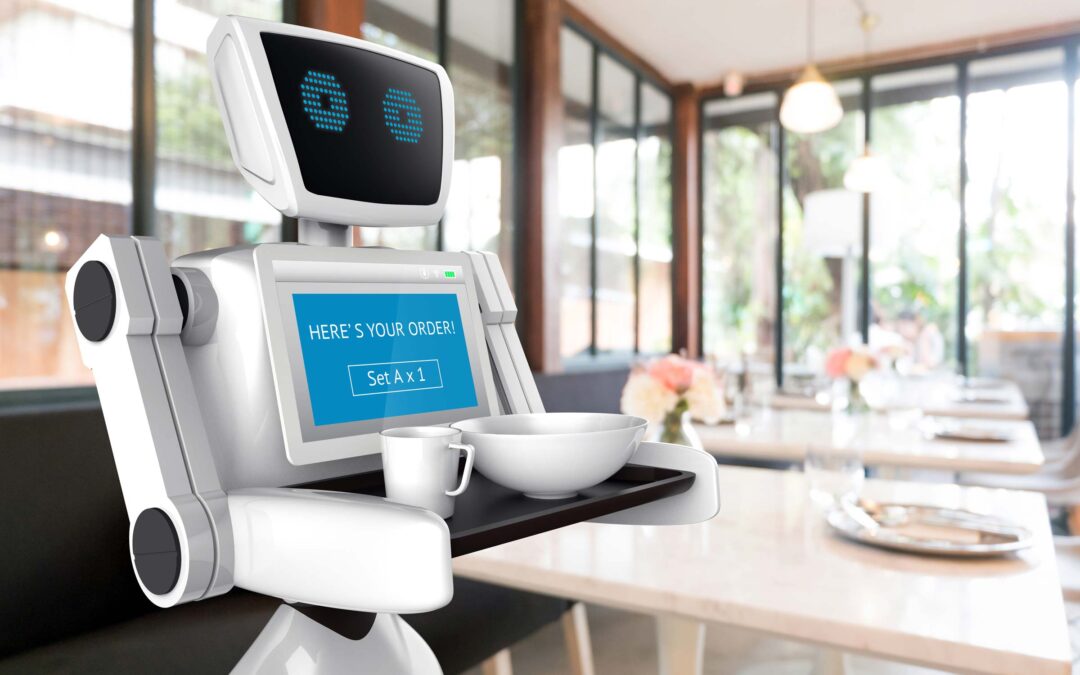The National Restaurant Association recently released its 2022 State of the Restaurant Industry Report. As expected, labor challenges are the top concern for most operators with food costs and occupancy coming in at a very close second and third. As the industry continues its recovery, one solution which has been elevated to the top of the list is none other than TECHNOLOGY.
From online ordering apps, delivery software, and mobile pay to the more extreme case of White Castle’s robot burger flippers, technology-focused solutions enable owners and operators to optimize operational processes and increase employee retention while still growing profits. The use of technology is changing the game for most operators, providing a competitive advantage, even during a labor shortage.
Here are some of the most prevalent technologies taking the restaurant industry by storm:
Food Delivery With Robots & Drones
Since the onset of the pandemic, the National Restaurant Association has reported three out of every five consumers order delivery or takeout once a week in the United States. The use of online ordering and delivery apps skyrocketed forcing companies like GrubHub and Door Dash to expand their delivery coverage. The next step is to automate delivery with the use of self-driving cars, robots, and drones. Bowling Green State University has been a test ground for Starship Robots, electrically-powered robots which deliver food on campus. The robot has obstacle detection using cameras, ultrasonic sensors, radar, neural networks, and other technology to detect obstacles, including animals, pedestrians/cyclists, and other delivery robots. While this is a fairly new technology, the reduction of wait times and the reliability of a robot seems appealing.
Self-Order Kiosks
This trend will continue to expand as allows for a reduction in line wait times with greater ability for a consumer to customize their order. For fast-casual concepts, it’s a win-win as it boosts customer satisfaction all while replacing employees which can then be moved to more important tasks.
QR Codes
Once a fading trend, QR has made a strong comeback thanks to the pandemic. QR codes allow customers to access menus, and some even allow them to order and pay without the hassle of downloading an app. With rising costs and the shortage of labor, QR codes are a low-cost method for owners to kill two birds with one stone. Some restaurants are able to run with a skeleton crew to prepare and deliver food without having a waitstaff which overcomes not only the rising costs of food prices but the lack of employees.
Outsourced accounting
Many owners and operators joined the restaurant industry to be an entrepreneur seeking to grow their profitable businesses. Now more than ever, spending countless hours doing back office accounting is not feasible. Many owners are taking steps to outsource their accounting so they can focus their energy elsewhere. Through advanced technology, owners can now view their restaurant data live, 24/7 to make strategic decisions. The transparency of your data allows for decreased costs, the ability to accurately track all of your expenses, revenue, and the health of your cash flow, and most importantly, gives you your time back and leaves the accounting to accountants. As the old business adage says, “Know your strengths and outsource your weaknesses.”
To learn more about the advantage of outsourcing your accounting, check out WVC RubixCloud’s infographic.
The pandemic forced restaurant owners and operators to develop new operating models, to adapt to changing environments in a few short months, and to keep pace with consumer expectations and various regulations. At the center of it call was technology. While the pandemic may have increased awareness and the sense of urgency for the adoption of new technology, the use of technology is the restaurant industry is here to stay.
Connect with Us.
Nicole Menden, Director

